Our Seal Range is divided into four main methods of shaft sealing, namely; Rubber Diaphragm, Rubber Bellows, ‘O’ -Ring Mounted and P.T.F.E. Wedge seals.
Our extensive Mechanical Seal Range has been designed to service the global pump market and are our seals totally interchangeable with all other manufacturer’s equivalent seals, without any modification to the existing seal housings and gland seals. Such is the variety available from Marine Seals, we con offer to replace any single spring seal and seal, practically always straight from stock.
Typical designs of each of the main shaft seal groups are;
| Seal Type | Diagram |
|---|---|
| RUBBER DIAPHRAGM | 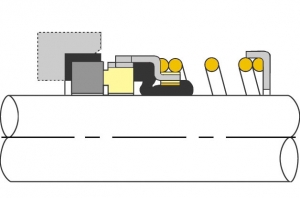 |
| RUBBER BELLOWS | 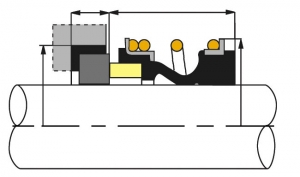 |
| O-RING MOUNTED | 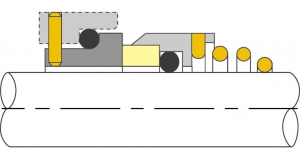 |
Seals for all Marine Applications
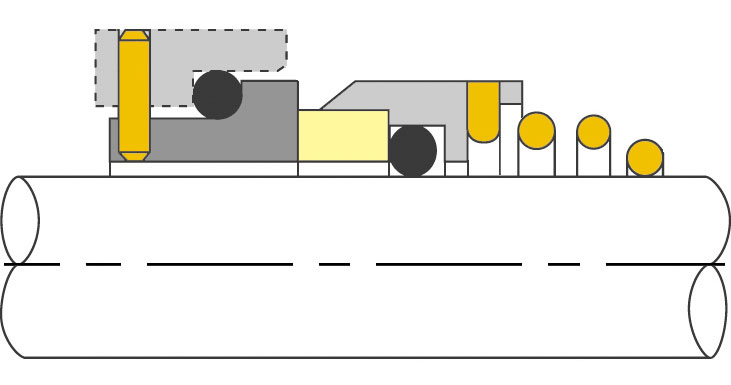
O Ring Type Seal
O ring type seals provide a positive drive to the rotary face, by a heavy duty spring, which is supplied either with left or right-hand wound springs, depending on whether clockwise or anti-clockwise shaft direction.
Various versions are available and vary only by the method of providing the drive to the rotary seal face.
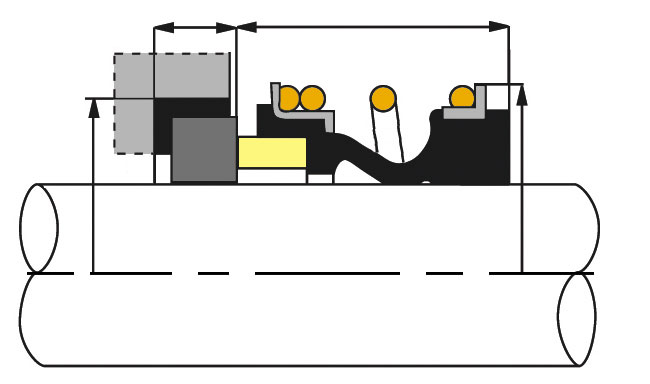
Bellows Style Mechanical Seal
An ingenious robust, non-fretting and non-clogging bellows design, capable of accommodating seal face wear, shaft misalignment and tolerances. The rotary face is resiliently mounted with no bonded joints and therefore will not sustain wear nor damage when in contact with a hard face material. The bellows have no moulded joints and are not subjected to torsional stresses.
These design features and our proven design face width and loading standards, provide increased seal performance, capability and life.
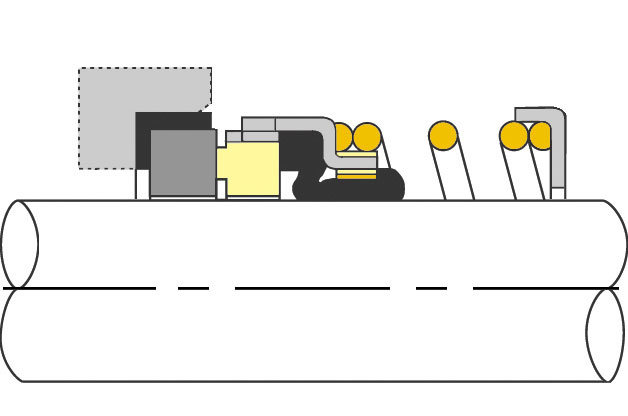
Diaphragm Style Seal
The shaft seal is provided by the rubber diaphragm, which is squeezed onto the shaft by the drive ring. Once fitted, the rubber diaphragm will grip the shaft giving a strong static seal and very positive drive, via the drive ring, to the seal face. As there is no relative movement between the shaft and the rubber diaphragm, shaft fretting, wear and hang-up hysteresis are eliminated and the seal can immediately accommodate some shaft run-out and misalignment.
Shaft axial movement and the movement required during the working life of the seal is handled by the elastomer rubber flexing at its junction point. The seal head automatically adjusts to compensate for any face misalignment, usually caused by shaft end float / pump body misalignment.
The closing spring force and the seal pumping pressure force maintain the faces in full contact, whilst the rubber diaphragm acts as an elastomeric bellows providing sustained flexibility. Positive drive of the seal face is transmitted via the drive ring and retaining housing and not via the spring, which merely provides some closing force to the mechanical seal faces. These seals can therefore be used to seal shafts rotating in either direction and in vacuum applications.
